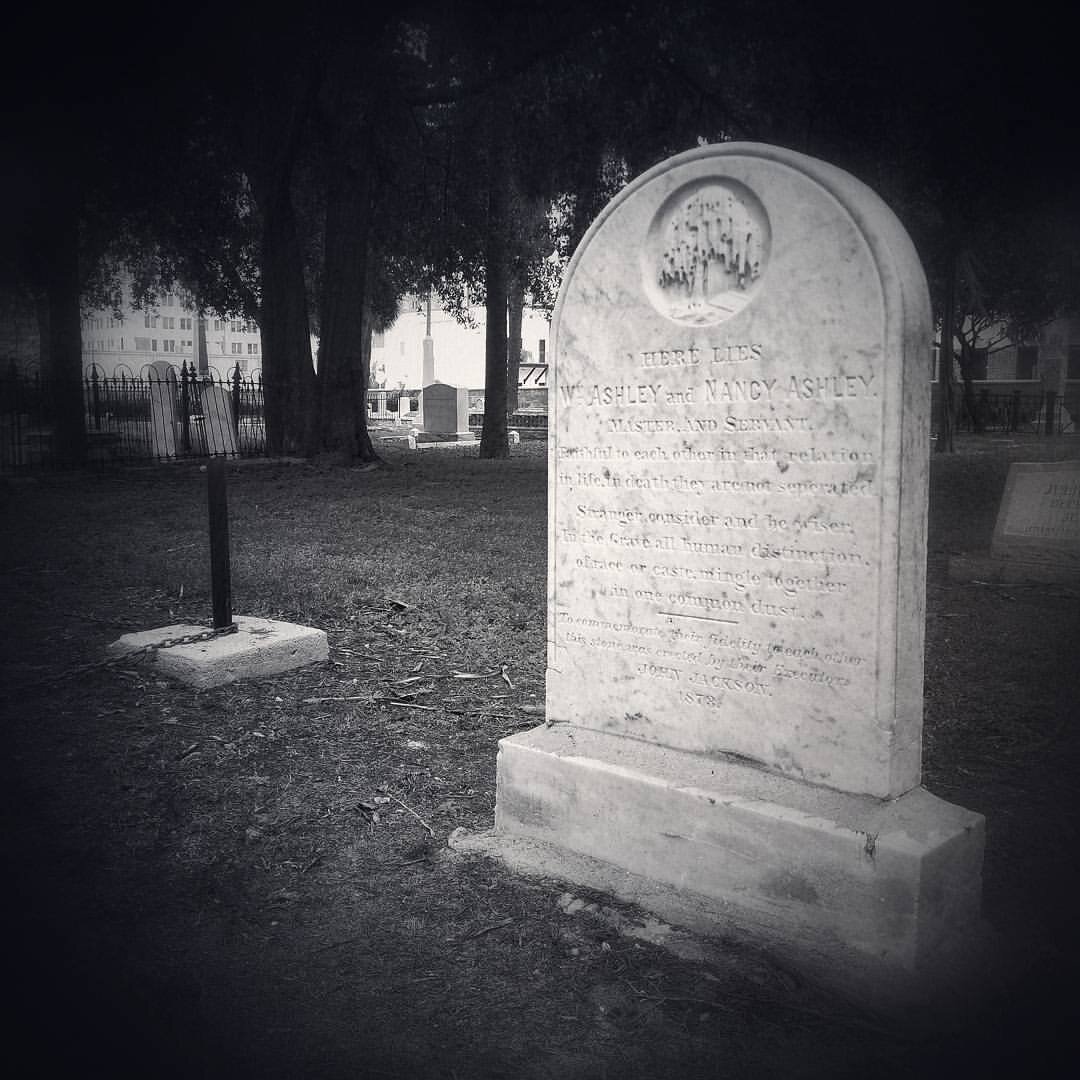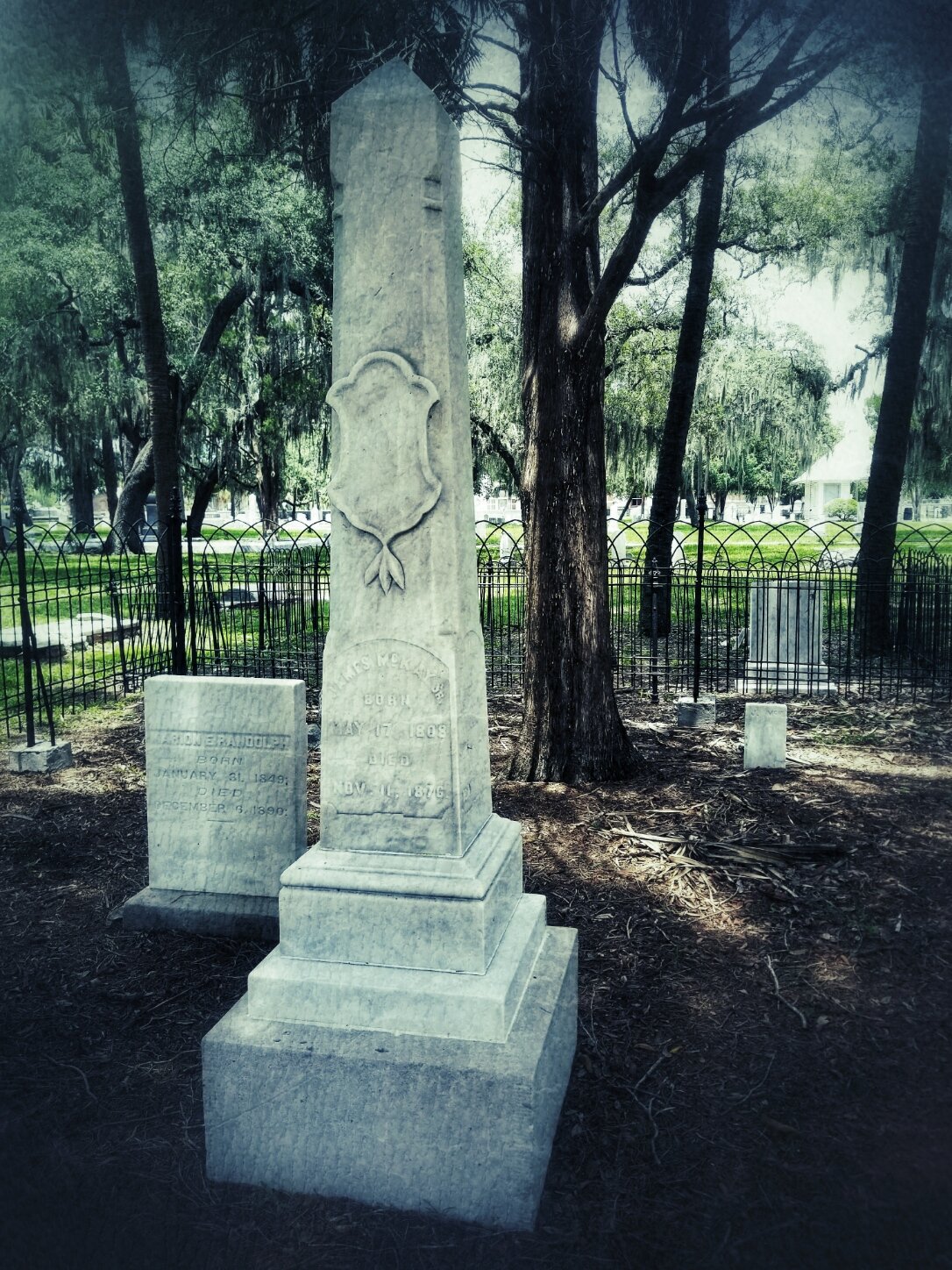Feel unfulfilled by this year’s Halloween? You aren’t the only ones! It’s hard to have a spooky good time when you have to social distance! If you've been following us for any length of time you'll probably realize we are kind of obsessed with the histories of the local cemeteries. And that got us thinking… what better way to stay safe and get your spook on than your own cemetery tour? Two years ago we did a small guided tour through Oaklawn Cemetery downtown. So we’ve gone back through our notes/photos/memories and written it down just for you. Now whenever the spirit moves you, you can check out some fantastic haunts yourself!
This map is also located at the bottom and if you click on it you’ll find it’s big enough to print!
Here’s the history of this beautiful old place:
Did you know that Tampa's oldest cemetery is literally downtown? Oaklawn cemetery was Tampa's first public burial place when it opened in 1850. back then the city wasn't even a city and only had 500 residents. Today it holds around 1700 graves including former mayors, a governor, veterans from 7 different wars, slaves, pirates, and two mass graves. Oh and during the civil war an 8-inch shell landed in the middle of it. And yes we said, pirates!
Oaklawn is one of the few cemeteries in the US where slaves and slave owners can be found in the same plots. Most notably William and Nancy Ashley (we've covered their love story before ). The cemetery was actually founded as a public burial for "white and slave, rich and poor." Guess when you only have 500 neighbors you're less likely to make a stink about who you're buried next to...
In 2017 USF researchers scanned the 3 acres of the cemetery with ground-penetrating radar looking for unmarked graves. Also at the end of 2017, Oaklawn was added to the national register of historic places.
That being said, here are our 8 favorite burials in Oaklawn Cemetery!
1. James Magbee
James T Magbee, the man, the myth, the … town drunk? AKA the most colorful man in Tampa history. Born in 1820 in GA records have him just kind of “showing up” in Tampa in the winter of 1845. As a magnet for trouble, he immediately got involved into a disagreement between the military and settlers over rampaging hogs. The settlers would let their hog run free, let the soldiers kill them and then press charges. The military commander of Fort Brooke wanted to build a fence to keep the animals out, but allowed as how he’d much rather kick Magbee and his friends out. Remember the hogs, because karma certainly did.
Through the years Magbee was an attorney (one of the first in Tampa), a Florida State Constitutional Convention delegate, a Florida State Senator, an early newspaper publisher, Deputy Collector of Customs at the Port of Tampa and a judge of the Circuit Court. What that list of accomplishments doesn’t include is that Magee was the first person in Florida history to be brought up on articles of impeachment in 1870 and then again in 1875. He was removed from his position as Deputy Collector of Customs at the Port of Tampa because of his drunken behavior, only to be reappointed again 25 years later. He also constantly getting into drunken brawls and spending the night in jail. The best story of his drunken antics? In the fall of 1870 Magbee got so drunk that he passed out in Franklin St (which at the time was unpaved and just dirty sand). His enemies poured molasses and corn onto his unconscious body. A short time later he was discovered by roaming HOGS, who proceeded to eat half of his clothes.
Other events in James T Magbee’s colorful life? He survived an assassination attempt by the mayor of Tampa, was the subject of a series of practical jokes that included having half of his hair shaved off, his head painted red, and the removal of the bolts that held the wheels of his buggy on. Other fun facts about Magbee, He established an orange grove on Florida Avenue, about a mile north of town, on the "brow of the rising ground overlooking Tampa" (now Tampa Heights), and furnished the paint for the Nebraska Avenue school. He also married three times, adopted a son but crossed him out of his will, and died December 12, 1885.
2. William & Nancy Ashley
Despite today’s conversation about race and civil rights, it’s sometimes difficult to remember that Tampa once belonged to the Confederacy. In fact, slavery was common here. Which makes the story of William and Nancy Ashley that more special. In a time that the city was still recovering from the Civil War and years of slavery, these two found love in an unexpected place. Read on from an excerpt from the city of Tampa’s web site:
William and Nancy Ashley's graves, are by far the most celebrated and one of the most curious of the interments at Oaklawn. William Ashley was a prominent white civic leader, serving as City Clerk. Nancy, the African-American servant who bore his surname, was also William's longtime companion and it was presumed also his wife outside the law. Following instructions left to William's executor John Jackson (another prominent white Tampan), the Ashley grave was opened to receive Nancy upon her death and, "to commemorate their fidelity in each other," a headstone was erected.
3. Reinternments
The city of Tampa owes a lot to Fort Brooke. Before being established on January 10, 1824, Tampa was home to a small community of Cuban and Native American fishermen near today’s Hyde Park. But because of the fort, the area was able to become a pioneer town and in 1849 was able to incorporate it as the "Village of Tampa." That was ONE year before this cemetery was created. Fort Brooke remained operational off and on through the civil war up until 1869. In 1883 the US government allowed settlers to homestead the area. At that time the twenty soldiers in the Fort Brooke cemetery were interred here. Despite helping create Tampa as we know it today the way we recognize impact is by naming a parking garage after it. During the construction of the convention center and other buildings in that part of downtown more burials of soldiers and settlers have been found and eventually reinterred here.
Other reinternments located in Oaklawn include numerous native american remains found while redveloping the land around Fort Brooke/the convention center. Specifically in 1987 during construction of the Tampa Convention Center. A few years prior to that a grave with the remains of soldiers and native Americans was discovered where the Fort Brooke Parking garage is. This should harldy be surprsing considering Fort Brooke was actually founded on an native american mound. Literally an old tree on top of the mound was the marker for the fort.
4. Pirates
Tampa might be a wee bit obsessed with pirates. And while the iconic Jose Gaspar is completely fictional, Tampa isn’t without it’s own flesh and blood pirates. When Oaklawn was first established, it was designed for: White and Slave, Rich and Poor. And let’s be honest very few pirates that died on land were… well wealthy. There are several markers throughout Oaklawn for local or well known pirates, mostly around the same area. If you want the full story check out this Tampa Bay Times article!
5. Charlie Wall
If you aren’t originally from Tampa, you might not know that our fair city has quite a past with the mob. Hard to imagine now, but for a time they ruled the city. One of the most infamous? Charlie Wall…
from the city of Tampa’s web site: Son of civic leader and prominent physician John P. Wall, Charlie Wall took a turn toward the dark side at an early age. As a teen and young adult, he immersed himself in Ft. Brooke City, a shanty town of gambling, drugs, and bawdy houses on the site of the former military post. By the 1920s, Wall was a gangster of stature, running the bolita (illegal lottery) racket locally until he was displaced by the Sicilian Mafia. Wall survived several mob "hits" but was finally murdered at home in 1955.
Also we apologize, this is the one grave we for some reason don’t have a photo of!
6. James McKay Sr
Cattleman, ship captain, mayor, blockade runner, James McKay was a little bit of everything. Originally from Scotland, McKay moved to America in 1836 and eventually Tampa in 1846. Back in those days Tampa was a village with about 200 citizens. In his time in Tampa he opened a general store, invested in real estate, operated a saw mill, ran cattle and started a shipping business.
In 1859 the now prominent business man was elected as the 6th mayor of Tampa. Unfortunately for him the civil war ended his term early. During the war Mckay became a blockade runner for the Confederacy until late in 1861 when he was caught by Union forces. He was hauled to Key West and put in prision. By 1862 the former mayor had signed an oath to the North and was allowed back home. After the war McKay went back to his shipping and cattle businesses. He past away in 1876.
Fun fact: Both his son (James McKay Jr) and his grandson (Donald Brenhan McKay) also served as Tampa’s mayor.
7. Vicente Ybor
Vicente Martinez Ybor, aka maybe the most important people in Tampa’s history, was originally born in far away Spain in 1818. After moving to Cuba to avoid joining the military, young Vicente learned the cigar industry. After supporting the Cuban rebels in the Ten Year War, he wisely moved his enterprise to Key West, FL. Business boomed and soon Ybor was looking to expand outside of the keys. Somehow, small town Tampa got lucky and beat out Galveston, TX for Ybor’s plans.
Vicente Ybor purchased his first tract of local land in 1885 to build his own little cigar producing city. At the time Tampa's population was 3,000. In 1886 the first Ybor City cigar was rolled and the town looked a little like the wild west. Yeehaw? By 1887 Tampa was still tiny and Tampa saw an opportunity. A chance to "grow" aka make some money money money. No literally, they saw green when they thought of all the port duties these cigars would earn them. So on June 2nd 1887 Ybor City was annexed aka taken over by Tampa, despite Vicente Ybor's protests. His claim? That the city would interfere with his cigar production. At the time there was one 3 story brick cigar factory (Ybor Square today) and the rest of the town was made of quick wood structures (mainly workers quarters), unpaved sand roads, and no street lights.
Well turns out Vicente was wrong. Within 10 years (give or take) Tampa's population had soared to 16,000. Due in large part to payroll money and duties of the cigar industry. By that point Ybor had brick paved roads, a street car line, and was producing millions of cigars. Without him, Tampa would never have grown so much or so fast. Still kinda stinks for Vicente, you literally build your own city, name it after yourself and everything, and TWO freaking years later they take it over!
Ybor died in Tampa on December 14, 1896. The Tampa Tribunes’s headline? "Great Benefactor Gone." In fact many local businesses actually closed the day of his funeral.
8. Dominick Ghira
One of the most beautiful (and lets be honest depressing) statues in Oaklawn Cemetery belongs to Domenico Ghira and his family. Ghira was from the old country, namely Itlay. Born in 1816 he didn't set foot in America until 1840 when he landed in Boston, MA. In 1849 for unknown reasons Ghira decided that moving to Florida, which had only been a state for 4 years and had no AC, was THE thing to do. Wasting no time he got hitched to Domenica (yeah...that's not confusing at all) a year later.
Ghira lived in Tampa until 1897 and unfortunately is best known for owning some very valuable land in the city. There is actually a neighborhood... subdivision really named after him around Columbus and MacDill. MORE importantly, he served as one of the first ferrymen, you know back in the day before Tampa had bridges? The ferry was an open deck, flat barge, which was hand-pulled with a steel cable. He had other shipping business but eventually opened a successful mercantile (the super target of the day).






















